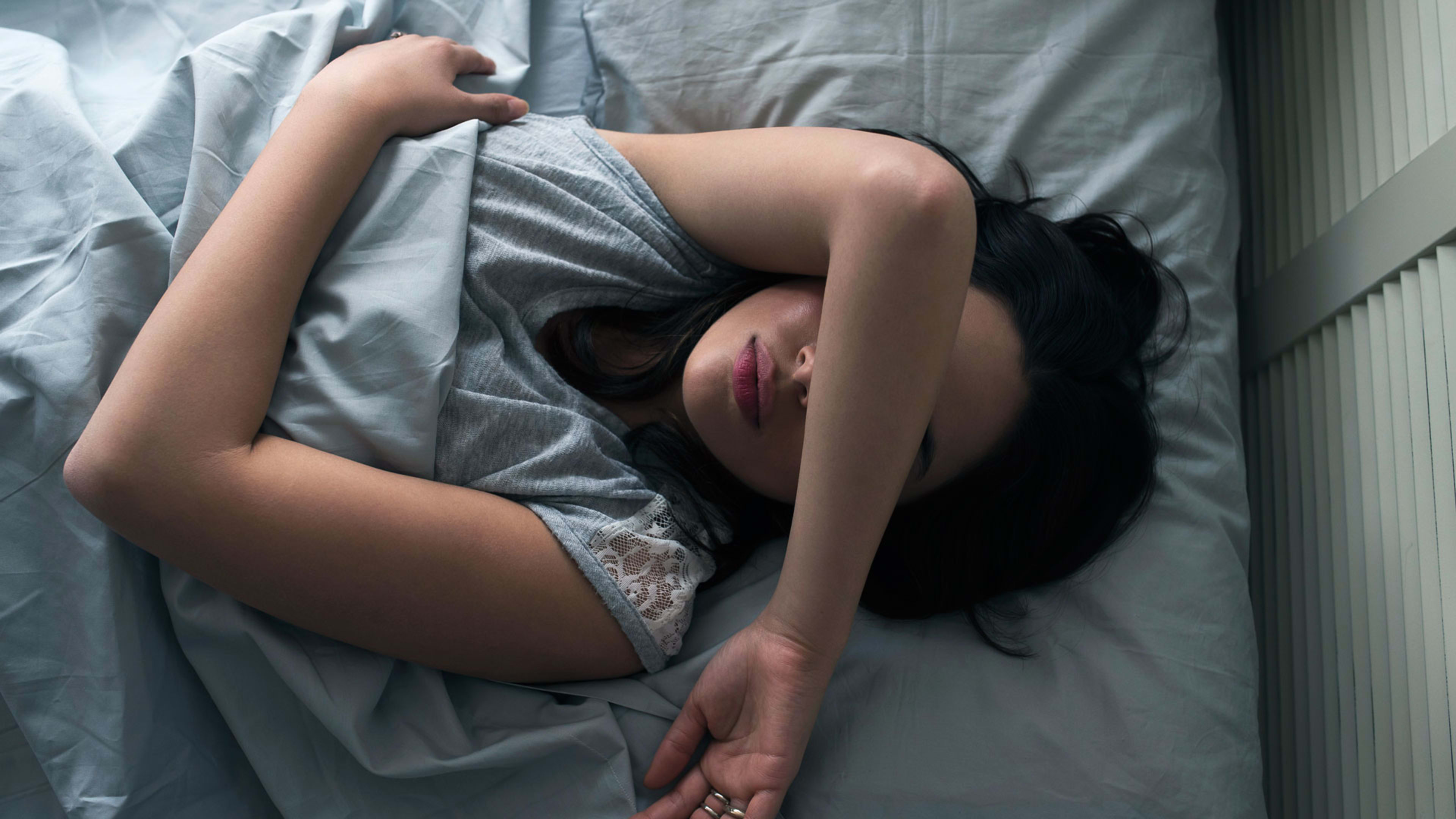I’m not being hyperbolic when I say that sleep is the most important thing in my life. In some ways, it’s more precious to me than my marriage, my child, or my job–because if I don’t get enough sleep, I cannot properly function as a wife, a mother, or a writer.
Sleep science is still in its infancy, but many researchers believe that the amount of sleep that each person needs varies widely and is dictated by their genes. For me, getting less than eight hours a night transforms me from my usual optimistic, affectionate self into miserable wreck of a human being. I get migraines, stress-eat pints of chocolate ice-cream for breakfast, and burst into tears while listening to sad news items on NPR. My brain clouds over, making it hard for me to write or perform analytical tasks. In a sleep-deprived state, I once had an entire 5-minute conversation with my husband before realizing I hadn’t pushed the “call” button on my phone.
As a result, I’ve had a sort of fixation with sleep all my life. I’ve devoted a lot of energy to getting enough of it. It’s affected my daily habits, perhaps even shaped my personality. I’m what is known as a precrastinator, which is the opposite of a procrastinator. I do everything earlier than I need to, for fear that last-minute work will interfere with my sleep.
I’m not alone in my sleep obsessions. There’s been growing interest in the science of sleep, spurred by the increasing awareness that sleep is crucial to brain function, health, and overall wellness. This is driving a wave of sleep research from universities and companies. There’s now a booming “sleep industry” devoted to using the latest science to create products–from mattresses to sheets to sound management solutions–that draw people in with promises of a sounder, more efficient, night’s sleep. Tech startups have been quick to jump in, developing complex sleep tracking technology that was recently only used in scientific sleep labs.
For this story, I selected and tested a range of sleep products. During an entire month, I incorporated the latest scientifically back sleep products into my routine then tracked how they affected my productivity.
Finding The Right Mattress
First things first: I needed to select a mattress, arguably the best foundation to a good night’s sleep.
Over the past five years, the two enormous mattress conglomerates, Tempur Sealy and Serta Simmons, have started to face competition from startups selling mattresses online that are shipped directly to customers in a box. These include Casper, Saatva, Leesa, Purple, Tuft & Needle, and Eight.
These newer online brands usually sell a smaller selection of mattresses, making the case that all humans are generally looking for the same thing: a comfortable mattress that will give them a good night’s sleep. Each brand has different theories.
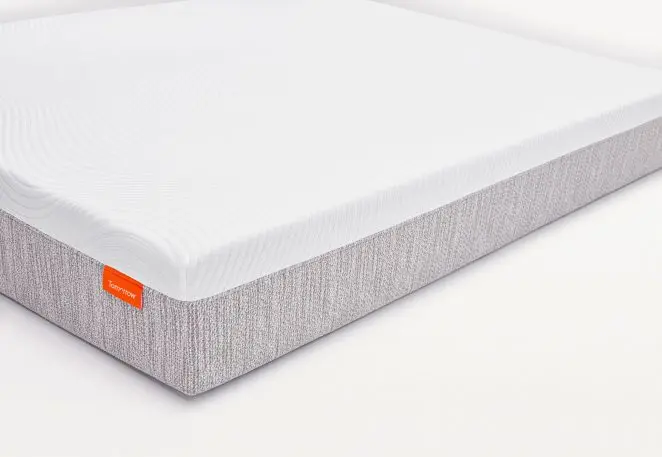
After investigating and testing out two dozen different mattresses across the market, the one that most intrigued me came from Tomorrow, a mattress-in-a-box startup that launched earlier this year as an independent subsidiary of Serta Simmons. They make a mattress that promises to provide the perfect “microclimate” for sleep.
Sleep research shows that humans need to be several degrees cooler than their normal temperature to feel sleepy and fall asleep. The problem, however, is that once you’ve reached a sleep state, your temperature then goes back up. Since your temperature continually fluctuates over the course of the night, many people end up with restless sleep because they are sweating, tossing, or reaching for covers to feel comfortable throughout the night.
As someone who often wakes up because I feel too hot in bed, I thought this could be a game-changer.
My Sleep Microclimate
While reporting this story, I visited the Serta Simmons Innovation Lab in Atlanta, which is one of the biggest sleep labs in the country, staffed by 40 sleep scientists who do everything from observing people’s sleep behavior to engineering comfortable materials for mattresses. It’s a kind of wonderland for people fascinated with sleep. There are mattresses everywhere–some made by Serta Simmons, others made by competitors–and blackboards scrawled from corner to corner with mathematical calculations. Scientists are looking at fibers under microscopes and dummies are mechanically jumping on beds. “That’s how we test if a mattress can really withstand 10 years of someone using it,” Chris Chunglo, the head of Serta Simmons product development, who oversees all the lab’s research, tells me.
One of the goals of the Tomorrow mattress is to adapt to your body’s changes in temperature over the course of the night. To aid in this, it has a layer of Phase Change Material on the top layer of the bed that feels cool when you lie on it, because it absorbs heat from your body, allowing your temperature to drop slightly. The heat then escapes from ventilation slots throughout the mattress. However, this cooling effect wears off after 20 minutes. “Research shows that the average person takes about 20 minutes to fall asleep,” says Bryan Murphy, Tomorrow’s founder. “The mattress is designed to ensure that once you’re asleep and your body temperature goes up, you’re not too cold.”
The first night I slept on the bed, I enjoyed the cool sensation when I first lay on the bed. It made me drowsy and relaxed. I also found that the mattress itself was more comfortable than my previous innerspring mattress. The top layer of the Tomorrow mattress is soft, adapting to the physiology of my body, but the layers underneath are firm and supportive, allowing my spine to lie flat. When I lay on my side, my shoulder would sink in, allowing my spine to stay aligned. (This combination of a soft, squishy top layer, followed by a firm lower layer is common with many of the new generation of bed-in-a-box foam mattresses.)
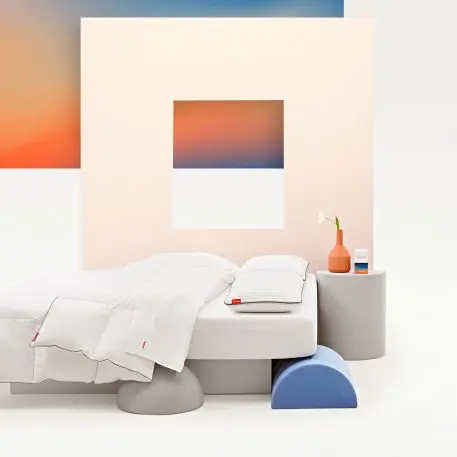
When I woke up in the morning, no part of my back felt stiff or achy. It was a remarkable feeling: I didn’t realize how often I had woken up throughout my life with a very slight discomfort in the middle of my back or some tension in my shoulders. Over the course of the next few weeks, I found that the combination of these two features meant sounder, uninterrupted sleep, since I wasn’t moving a lot to get comfortable, or reaching for the blanket through the night.
But Chunglo explains that to create an optimal sleep microclimate, you need to have sleep accessories that are also adaptive to your body’s changing temperature throughout the night. Tomorrow also has a memory foam pillow equipped with the same Phase Change Material technology, which I used and kept my head feeling supported and cool at bedtime.
It also helps to have high-quality, soft and breathable sheets, so that when your body warms throughout the night, heat escapes rather than getting trapped. There was a time when good sheets were very costly, but there are now many direct-to-consumer bedsheet startups, like Parachute and Boll & Branch, that make excellent sheets affordable. The ones I chose were long-staple 480 thread count sheets from Brooklinen and cost $159.
Finally, I also set my Nest to 68 degrees right before bed, which was cool enough for me to fall asleep with a light blanket, but not too cold that I would wake up. Together, these products made it much easier for me to fall asleep and made me feel comfortable throughout the night. As I was about to find out, all of this had a profound impact on the quality of my sleep.
Lab-Quality Monitoring
I’ve always been interested in tracking how many hours I’ve slept. For years, I wore a bio-tracker on my wrist, but I found it inaccurate because it would often mistake stillness for sleep. And in any case, I often found that sleeping many hours didn’t necessarily correspond with feeling more rested.
These days, there are far more accurate sleep trackers on the market. Some brands, like Eight, have them incorporated into the mattress. But you can also buy trackers that you put under your bed or on your bedside table, like S+ by ResMed, Emfit, and Beddit. I used one called Sleeptracker that works with any mattress on the market, collecting data on a phone app.
I was impressed by how sensitive it was to my particular movements. If you sleep with a partner, you can get two devices that you insert under each side of the bed. And you can let it know if you have a pet–or 28 pound toddler–who makes occasional visits to your bed.
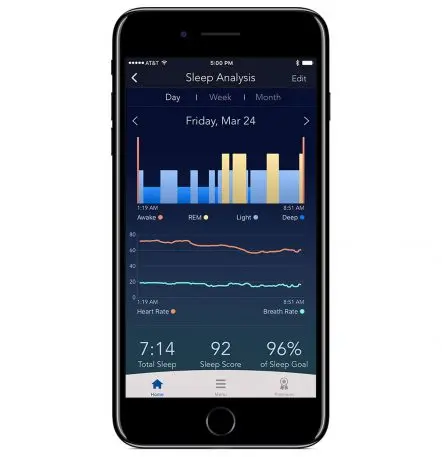
For the first time, I was able to identify the exact moment I fell asleep and when I was going into different phases of sleep. Rather than monitoring your movement, Sleeptracker identifies your breathing patterns and heart rate, since these markers change when you enter different sleep states. The app allowed me to move from measuring the quantity of time I was in bed to measuring the quality of my sleep.
Every morning, I get some important data points. I get a figure about my sleep efficiency, which is the percentage of time I was actually asleep. I also receive my sleep score, which is Sleeptracker’s measure of my overall quality of sleep, including how much REM sleep I got. These are quick figures that allow me to see how well I am sleeping from one night to the next.
This was life-changing for me. I discovered that when I had more efficient sleep, I could be in bed for a shorter amount of time, but still feel extremely well rested. This means that I have more hours in my day to work and hang out with my family. Empowered with real data, I am able to pinpoint what is actually disrupting my sleep, rather than just speculating. I discovered that my sleep score goes down when I go to bed anxious or angry, so I do a mental check before bed and do breathing exercises if I am worked up about something. Drinking more than one glass of wine at dinner lowers my score, so now I watch how much I’m consuming.
For years, I assumed that if I was asleep for eight hours of more, I would wake up well-rested. After a full night of sleep, if I somehow felt tired or crabby, I assumed there was something else wrong, like I was hungry or that other people were being mean to me. I don’t need to hypothesize any more. There are nights when I’ve been in bed for nine hours, but it wasn’t efficient sleep, so I am able to mentally prepare myself for a tougher day ahead — or cut myself some slack. But perhaps most importantly, I can learn why I slept so poorly and change my behavior to make sure it happens less often.
Sleep Ambiance
The final piece of the puzzle had to do with creating optimal conditions in my bedroom, so that all my senses were primed for sleep.
There is plenty of received wisdom about the best environment for going to sleep. Some of this is now back by scientific research. Lavender, for instance, has been used for centuries to promote relaxation. Some studies have found that it does, indeed help with insomnia, anxiety, and stress. So about an hour before bed, I use a diffuser with lavender essential oils.
Sleep scientists tend to agree that we sleep best in darkness to best regulate our circadian rhythms, so I installed light blocking drapes in my bedroom. Every night, I made it part of my routine to plug my phone and any other devices in my study next door, since “blue light” has been proven to disrupt sleep.
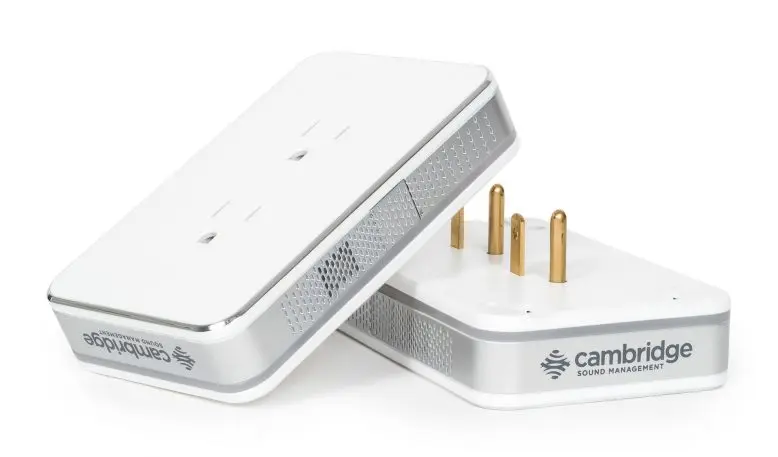
There’s also some research that suggests that having the right ambient noise, that drowns out other sounds, can help you sleep more deeply. I got a noisemaking device called the Nightingale, that adapts to the acoustics of your room. It was tested in hospitals, where patients who used it fell asleep 38% faster.
It took some getting used to. When I first tried it, I was hyperaware that “white noise” or “rainfall” sounds were playing in the background, which actually kept me up a bit longer. But then, the sounds seemed to fade into the background. After three days, I found that the Nightingale did, in fact, make me fall asleep faster, partly because the noises seemed to signal to my brain that it was time to fall asleep.
The Results: Better Zzzs, More Work
After a month of incorporating these different products into my schedule, I noticed some major changes. I fell asleep much faster. On a typical night, it only took me about 10 minutes to fall asleep compared to 20 to 30 minutes when I started. It turns out, I don’t actually need the eight hours of sleep which I’ve always thought I did. I need a bit more than seven hours of highly efficient, uninterrupted sleep to feel great the next morning. This means more time working, and less time lying in bed, trying hard to fall asleep.
These days, I head to bed at 10:00 p.m. and wake up spontaneously at 6 a.m. I wake up alert and energized, so I have nearly two productive hours in the morning before my husband and daughter get up. I use that time to clear my inbox, make my to-do list for the day, and sometimes even start writing.
Having a good night’s rest also means that I don’t have a noon or 3 p.m. crash, when my brain gets cloudy and I need caffeine to stay focused. I’m able to work fairly productively all morning, then take a walk at lunch time to recharge. I’m then able to keep powering through till about 5 p.m., when I prepare for dinner and begin winding down in preparation for sleep.
Previously, I set aside one day a week as a “dead day,” in case I didn’t get enough sleep, and would focus on busy work like transcribing interviews and filing expenses. In the entire month I tested these new techniques, I only had one wasted day, and it was when my daughter was up all night.
This project hasn’t cured me of my obsession with sleep. But rather than constantly worrying about whether I am going to get enough of it every night, my focus is now on making sure my sleep score is constantly rising. Most nights, I am averaging a sleep score of about 80, which is higher than the national average, and an improvement over my starting score, which was 62. But I’m constantly monitoring and improving my numbers. If sleeping were a competitive sport, I’d be on the Olympic team.
Recognize your brand’s excellence by applying to this year’s Brands That Matter Awards before the early-rate deadline, May 3.
